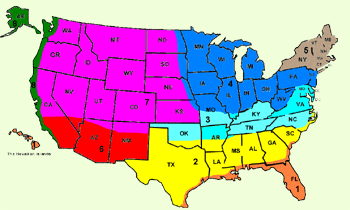Map of Growing Conditions
Key Takeaways
Reno's climate challenges:- Unique Climate: Reno's "Purple Zone" climate is tough on grass, featuring cool winters, hot summers, and high winds.
- Grass Selection: Native and drought-tolerant grasses like Buffalo grass and Blue Grama are ideal for local conditions.
- Seasonal Planting: Cool-season grasses are best planted in late spring or early fall, while warm-season grasses thrive when planted in late spring to early summer.
Reno is located in the “Purple Zone” and is considered to be in the Western Region of the US. While many of us love the climate we live in, it is not ideal for grass. We are known for our cool winters, hot summers, high winds, and relatively dry climates. Cool-Season grasses are commonly found in this area. Due to the dry conditions, grasses that handle drought and extreme weather fluctuations are ideal. However, with proper watering techniques, a few cool & warm season grasses can grow if properly maintained. Mowing typically lasts from early spring through late fall, with watering required for many non-drought tolerant grasses, and during hot summer months. Planting of cool-season grasses is common during late spring and early fall months. Conversely, warm-season grasses tend to plant best during the late-spring and early summer months. Grasses commonly found here: Native Grasses (Buffalo grass, Blue Grama, and Wheatgrasses), Fescues, Kentucky Bluegrass, Zoysia, and Bermuda. Interested in professional lawn care? Call Cory's Lawn Service at (775)-868-0123 to get set up today!

